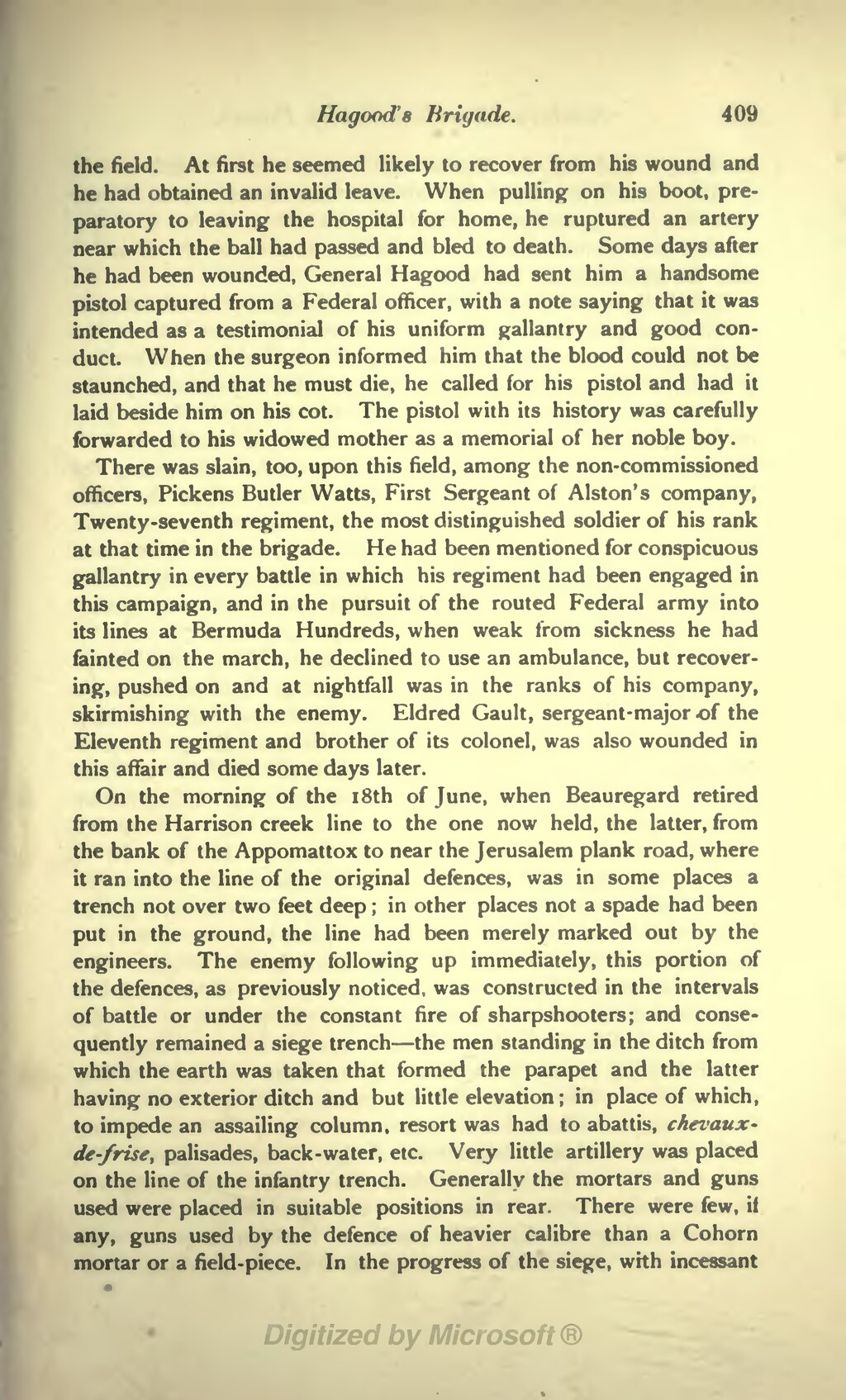Hagood'8 Brigade. 409
the field. At first he seemed likely to recover from his wound and he had obtained an invalid leave. When pulling on his boot, pre- paratory to leaving the hospital for home, he ruptured an artery near which the ball had passed and bled to death. Some days after he had been wounded, General Hagood had sent him a handsome pistol captured from a Federal officer, with a note saying that it was intended as a testimonial of his uniform gallantry and good con- duct. When the surgeon informed him that the blood could not be staunched, and that he must die, he called for his pistol and had it laid beside him on his cot. The pistol with its history was carefully forwarded to his widowed mother as a memorial of her noble boy.
There was slain, too, upon this field, among the non-commissioned officers, Pickens Butler Watts, First Sergeant of Alston's company, Twenty -seventh regiment, the most distinguished soldier of his rank at that time in the brigade. He had been mentioned for conspicuous gallantry in every battle in which his regiment had been engaged in this campaign, and in the pursuit of the routed Federal army into its lines at Bermuda Hundreds, when weak from sickness he had fainted on the march, he declined to use an ambulance, but recover- ing, pushed on and at nightfall was in the ranks of his company, skirmishing with the enemy. Eldred Gault, sergeant-major of the Eleventh regiment and brother of its colonel, was also wounded in this affair and died some days later.
On the morning of the i8th of June, when Beauregard retired from the Harrison creek line to the one now held, the latter, from the bank of the Appomattox to near the Jerusalem plank road, where it ran into the line of the original defences, was in some places a trench not over two feet deep ; in other places not a spade had been put in the ground, the line had been merely marked out by the engineers. The enemy following up immediately, this portion of the defences, as previously noticed, was constructed in the intervals of battle or under the constant fire of sharpshooters; and conse- quently remained a siege trench the men standing in the ditch from which the earth was taken that formed the parapet and the latter having no exterior ditch and but little elevation; in place of which, to impede an assailing column, resort was had to abattis, chevaux- de-frise, palisades, back-water, etc. Very little artillery was placed on the line of the infantry trench. Generally the mortars and guns used were placed in suitable positions in rear. There were few, ii any, guns used by the defence of heavier calibre than a Cohorn mortar or a field-piece. In the progress of the siege, with incessant
